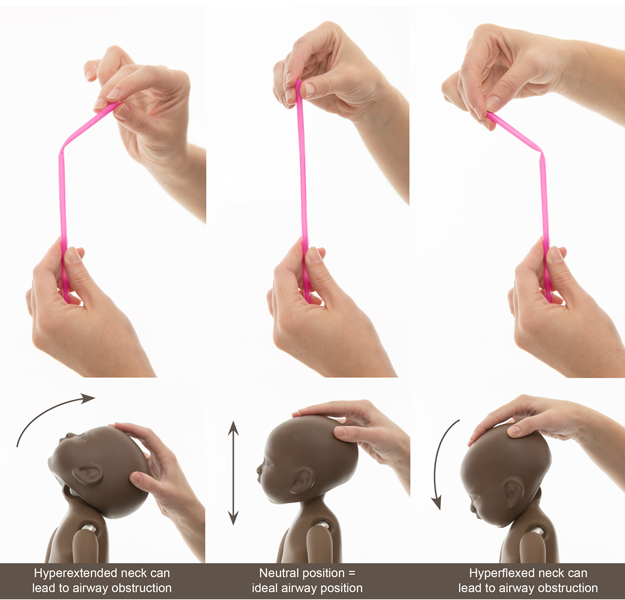Positional Asphyxiation
Positional Asphyxiation
Did you know?
Babies are quite different to adults, this includes the way they breathe. Babies breathe through their nose unless they are crying, and are more prone to positional asphyxiation due to their under-developed airways.
When working with babies, it is important to understand these differences so we can minimize the risk of injury.

Research shows babies positioned in a slouched position with their chin resting on their chest for extended periods of time may lead to hypoxia (oxygen deprivation/ reduced oxygen saturation). In newborns, the airway kinks (like a straw) due to the heavy weight of their head, resting their chin on their chest. Airway occlusion in a newborn can happen in all directions, not just backwards or forwards.
Poses where a baby’s chin is resting on their chest (potato sack, Huck Fin as well as some back lying and wrapped positions), their head is hyperextended upwards (Hands under chin, froggy) or even all the way to one side (bum up and some side and back poses) should be monitored closely. This issue is not unique to newborn photography; positional asphyxiation can happen in a car seat, swing, bouncy seat or a baby carrier.
This doesn’t mean you should stop creating lasting memories with beautiful poses. Being up to date with newborn safety not only puts mum and dad at ease by reducing the risk of injury to their bundle of joy but also enhances your confidence to allow your creativity to flow
Signs of respiratory distress in babies
Who's at risk?
- Breathing increase
- Colour changes
- Grunting
- Wheezing
- Muscles going in and out more than normal
- Nostrils flaring
- Head bobbing up and down as they breath
- Pursed lips as they breath out
- Newborn 0-4months are at greatest risk
- Newborns with low birth weight
- Premature babies
- Babies with Hypotonia (low muscle tone)
How to prevent positional asphyxiation
- Monitor your baby closely when posing
- Listen for unusual noises like grunting or laboured breathing
- Check baby frequently. Baby’s head should not be kinked sideways or falling forward onto baby’s chest
- Take breaks from posing, don’t maintain restrictive poses for extended times. Consider feeding times to reduce risk of hypoglycaemia
- Always remain within arms reach of baby Make sure baby has access to safe sleeping area when not actively shooting


Are you a newborn photographer?
Join our global community and build friendships with friendly, like-minded photographers from around the world
Join now for FREE

Article written by Jacintha Murphy RN

